TAISHIN ARTS AWARD
Observations from the Artistic Directors
To Face Means to Have the Front Towards… Regarding the Positivity/ Frontality of Art
Tai-Sung Chen, Artistic Director (2016-2018)
To Face Means to Have the Front Towards… Regarding the Positivity/ Frontality of Art
Tai-Sung Chen, Artistic Director of the Taishin Bank Foundation for Arts and Culture (2016-2018)
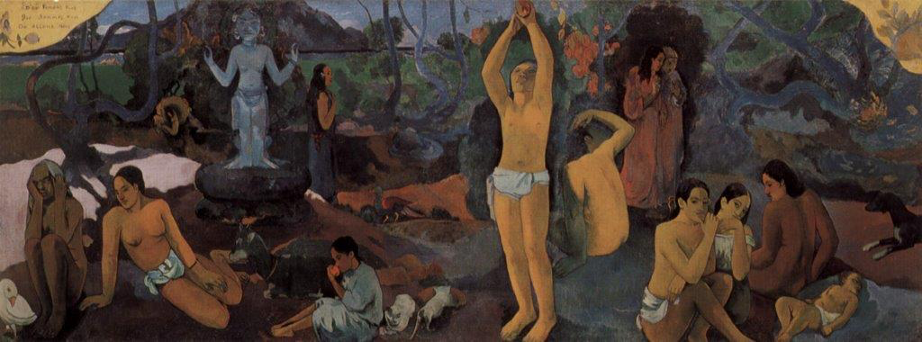
Paul GAUGIN, Where Do We Come From? What Are We? Where Are We Going? (1897-98). Collection of the Museum of Fine Arts, Boston, U.S.A.
“Where do we come from? What are we? Where are we going?” These questions have formed the title of Paul Gaugin’s masterpiece, and constitutes what lingers in my mind after hearing the talk about the meaning of the Taishin Arts Award (referred as the “Award” below) given by its founder, Thomas Wu (president of the Taishin Holdings); in particular, his mentioning of the “positivity of art” in this talk.
Frankly speaking, this topic is not a simple one; at least, it should not be for ARTalks. Otherwise, it would have defied the purpose of this website, which is dedicated to constructing and contributing to discourses on art. In other words, when “positivity” refers to “constructiveness” or “positiveness,” it means that art is required to shoulder a positive social function. However, instead of seeing this demand as a form of discipline on the moral level, I would suggest that art needs to tease out all those thought-worthy, ambiguous ideas and feelings. Furthermore, “constructiveness” has always been a corporate characteristic. Consequently, it is understandable that Wu would approach art from this angle. Furthermore, the corporate group of Taishin has consistently striven for nurturing the Taiwan contemporary art ecology and giving back to the cultural community and society as a private corporation. In this case, one must ask the following question: What does the mind-challenging, ambivalent positivity refer to?
To answer this question, the rather dramatic life of Gaugin might be able to shed some light: Originally a member of the bourgeois class, and “a man of the financial world,” the painter used to live a well-provided life as a stockbroker in Paris. However, he relentlessly bet his life on art, and persistently pursued artistic creation without regret, escaping from the affluent 19th-century Western civilization by exiling himself to the peripheral islands of Tahiti on the Pacific Ocean. He tried to merge himself with a pure longing for nature, which indicates a utopian imagination about the primal, simple life of the islanders. In fact, what people have to face with most of the time is not necessary something of their own choosing; and even if it is, it sometimes comes in a form different from people’s expectation. This is similar to the questions raised by Gaugin through his painting: Human beings must face the topics of life, eros, death, while asking about the meaning of life and the metaphysical existence apart from the physical body.
Whether we are living in the finite material world or not – as it is suggested by the English title of Ava Hsueh’s solo exhibition, In Front of You, which was presented at the National Taiwan Museum of Fine Arts – we all question about “Life”—what lies in front of you is what you need to face. In the case of Hsueh’s exhibition, what lies in front of the audience are her abstract paintings, from which the audience need to form their own realization. As for the answer, it surely varies from one individual to another. However, in the exhibition, the audience inevitably find themselves faced with a powerful field, woven with intertwining, thunderous lines that are either continuous or broken. Although the artist chooses an expression different from the figurative vocabulary of Gaugin, the phrase “In Front of You” still points to the same ultimate concern about life as Gaugin’s masterpiece suggests. This is similar to the now deceased artist Richard Lin’s sculpture, What’s Ahead?, which questions about the same thing through his abstract spatial forms.
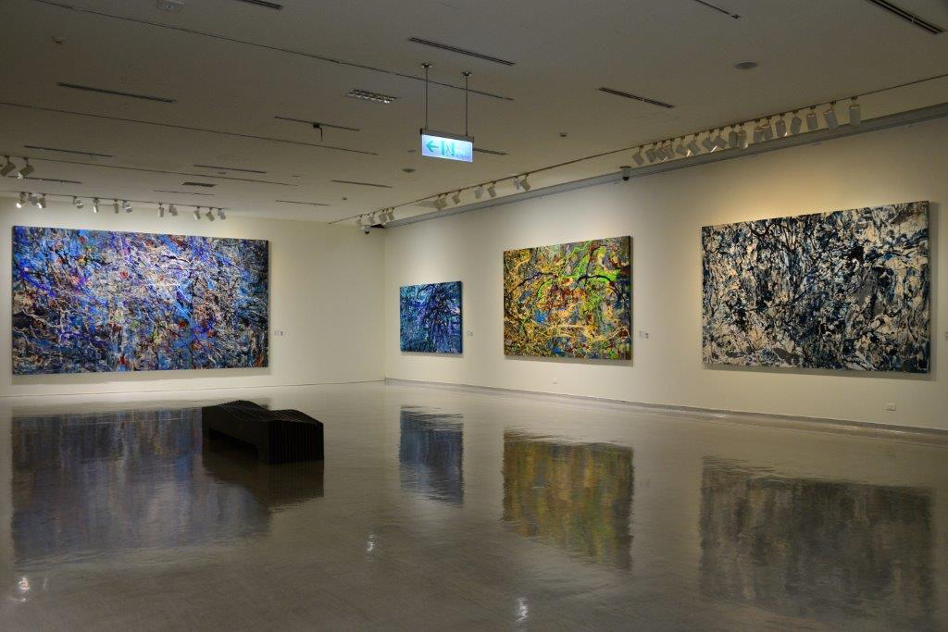
Ava HSUEH, In Front of You (2016). Image courtesy of the National Taiwan Museum of Fine Arts
The Taishin Arts Award is never just about conferring prizes to honor one’s artistic accomplishments, and demonstrate a certain cultural prestige. It also endeavors in promoting the work of art criticism because the theorization of art justifies an art award and becomes its purpose. Without the former, the latter simply lacks a convincing basis. Naturally, the winning of the Award sometimes comes as a serendipitous surprise. However, it is still a way of recognizing an artist’s work and honoring his or her artistic achievements. Art is like the vast ocean of life. Its endless waves are constantly surging toward and splashing onto the coast, sending seemingly small yet profound messages. Moreover, whether we are quietly lying down on the beach and listening, or trying to capture them by throwing ourselves into the waves, these messages are what the Taishin Arts Award and all the art critics have aimed to receive relentlessly. The profoundness of these messages set them apart from conforming, popular, trivial expressions. Their smallness in fact epitomizes pressing issues about survival in Taiwan and the world—that is, they speak of a unique perception of and realization about life or the community of life. Art criticism is not to annotate artworks, to accumulate existing knowledge, or to conservatively re-produce and recycle within the system. Instead, it aims to critique artworks, or to critique with artworks about other things in the world. It is a way of expanding one’s horizon, to enable people to see things they have not or do not want to see. In short, it is a gesture of removing the veil of a wide range of discourses of power. Furthermore, if there is no awakening in a crisis, there will be no true critique. This is validated by another implication suggested by the English word “critic”: the critical point.
Art criticism is concerned with the existential conditions of human beings. This is similar to the subjects that art deals with, which are the critical points of different realities of human survival both in Taiwan and around the world—from the exploration of corporeality in Damien Hirst’s The Physical Impossibility of Death in the Mind of Someone Living (1991); to theatrical works like Tsai Ming-Liang’s The Monk from Tang Dynasty (in collaboration with Lee Kang-Sheng and Kao Jun-Honn, 2014), which discusses the situations of life; the states of living in Lee Ming-Chen’s Dear All (2013); the evocation of historical memory in Kao Jun-Honn’s The Ruin Image Crystal Project (2014); the realms of life and death in Bill Viola’s Ocean Without a Shore (2007); the mesmerizing lust in Su Hui-Yu’s Super Taboo (2016); to concerns about the grand narrative as well as socio-political care and intervention in works such as the theatrical series, Der Ring des Nibelungen: A Revolution Unarmed (2014), curated by Hong Hong; the restoration of natural ecology in Wu Mali’s Art as Environment— A Cultural Action on the Plum Tree Stream (2011); the discussion about the destiny of humanity in Wang Jun-Jieh’s transmedia no-man theatre project, Sin City (2013); to Wu Tien-Chang’s Never Say Goodbye 2001–2015, which concentrates on Taiwan’s cultural subjectivity, and many more.
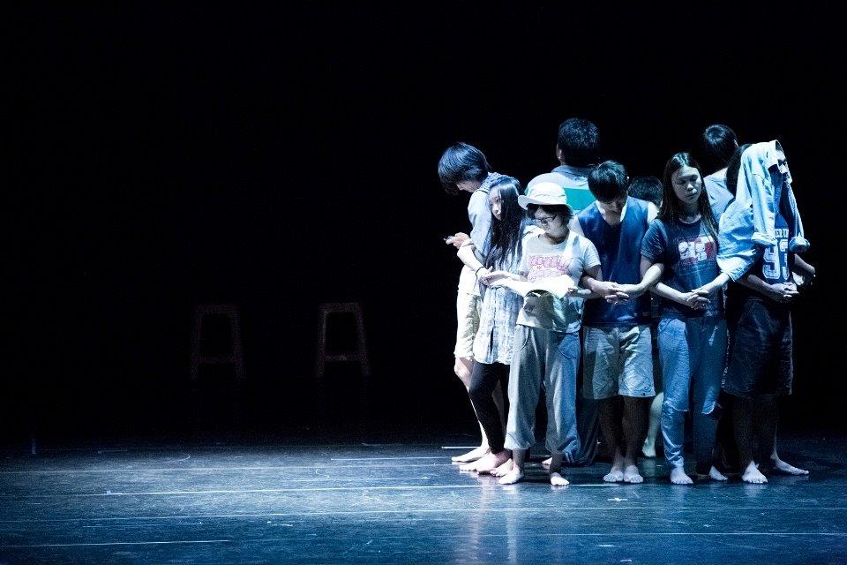
LI Ming-Chen, Dear All (2013). Image courtesy of LI Ming-Chen.
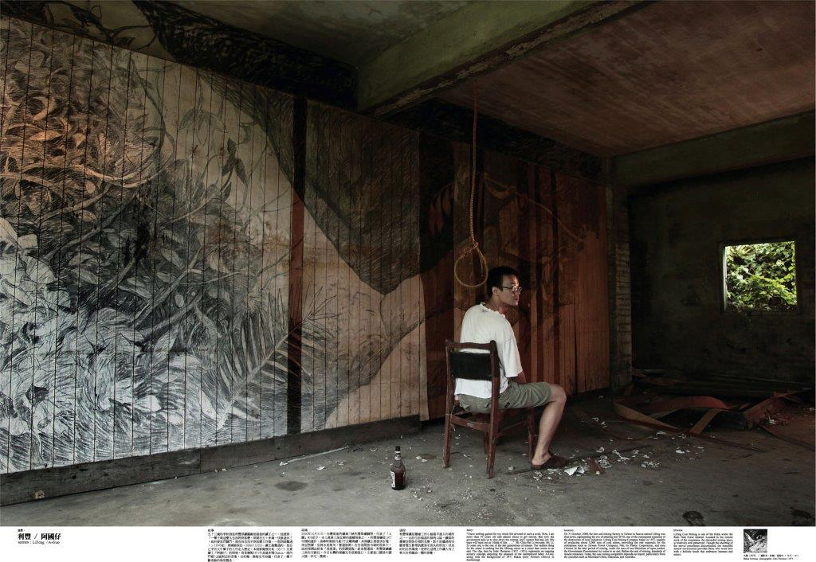
KAO Jun-Honn, The Ruin Image Crystal Project (2014). Image courtesy of KAO Jun-Honn.
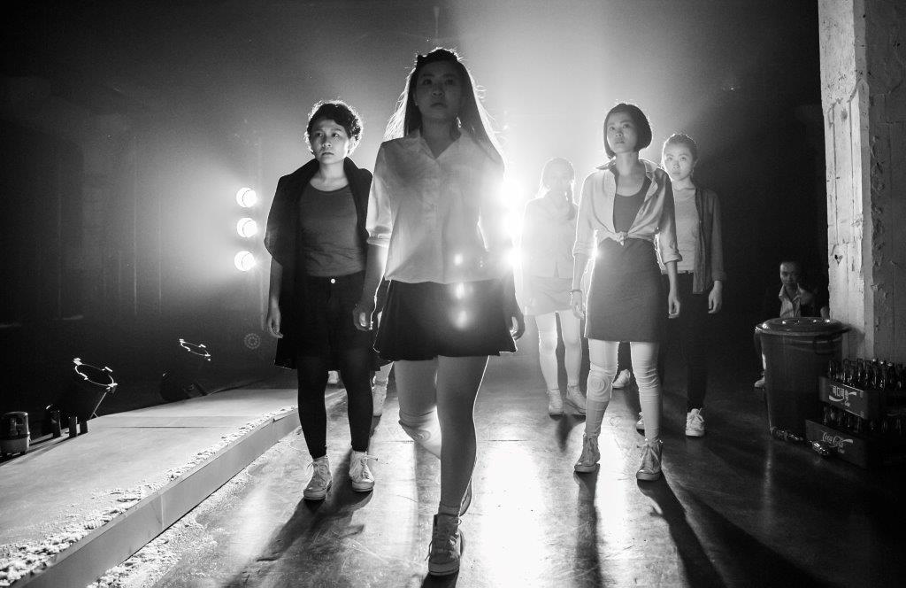
Dark Eyes Performance Lab, Die Walküre, from the theatrical series of Der Ring des Nibelungen: A Revolution Unarmed. Image courtesy of Dark Eyes Performance Lab.
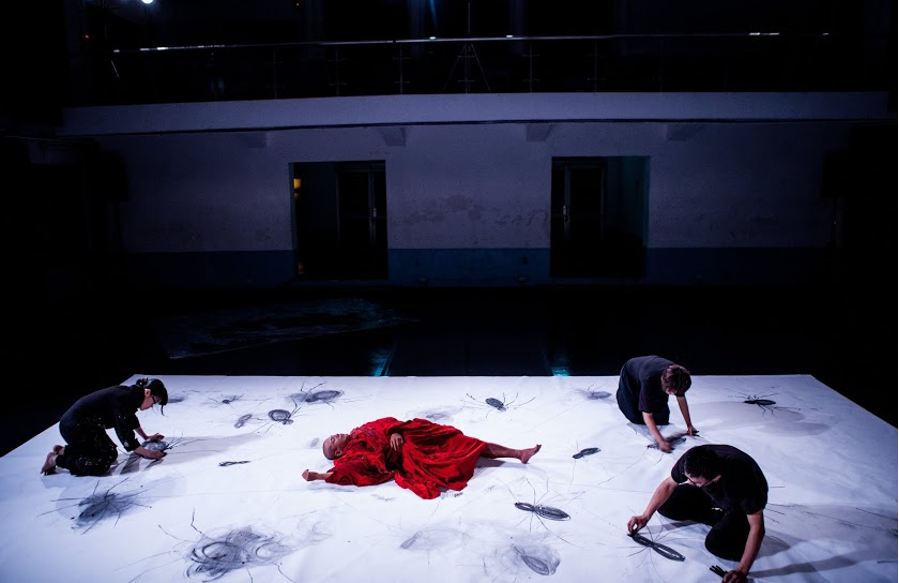
TSAI Ming-Liang (in collaboration with LEE Kang-Sheng and KAO Jun-Honn), The Monk from Tang Dynasty. Image courtesy of Homegreen Films. Photography by LIN Meng-Shan.
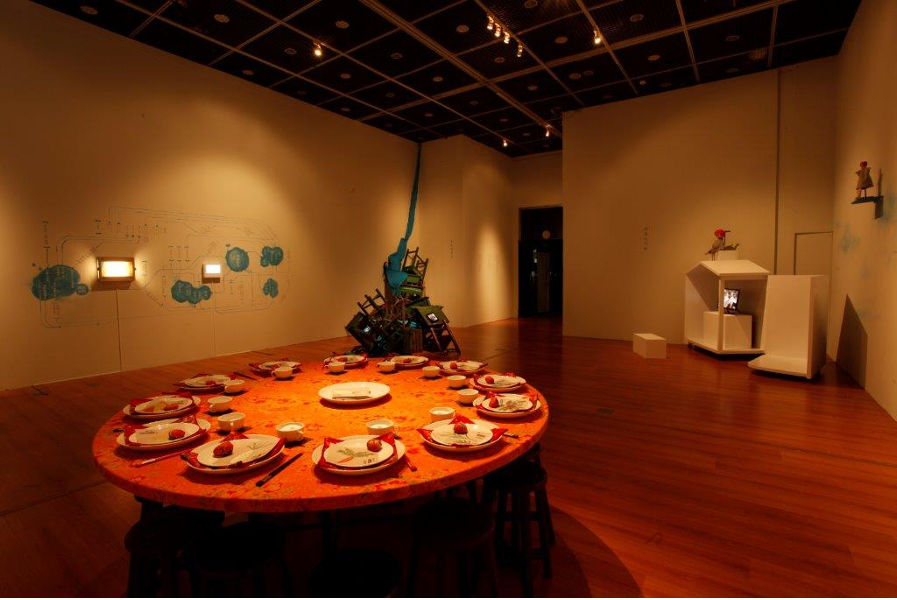
WU Mali, Art as Environment— A Cultural Action on the Plum Tree Stream (2011). Installation shot of the 11th Taishin Arts Award Exhibition at the Museum of Contemporary Art, Taipei.
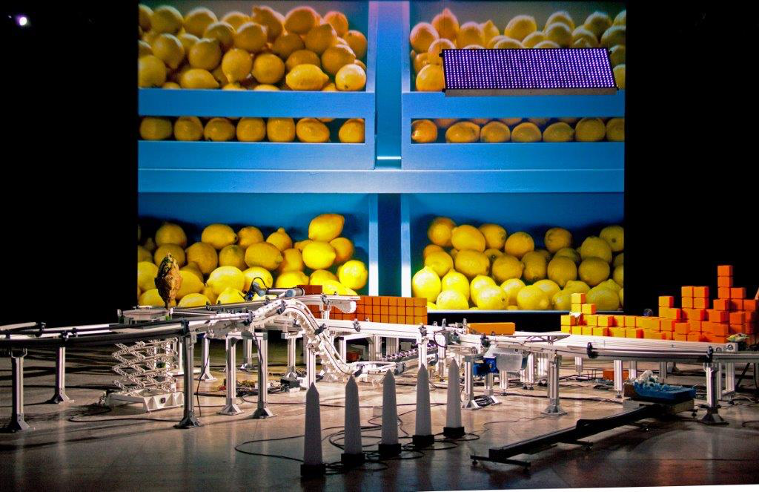
WANG Jun-Jieh, Sin City (2013). Image courtesy of the Center for Art and Technology ,Taipei National University of the Arts.
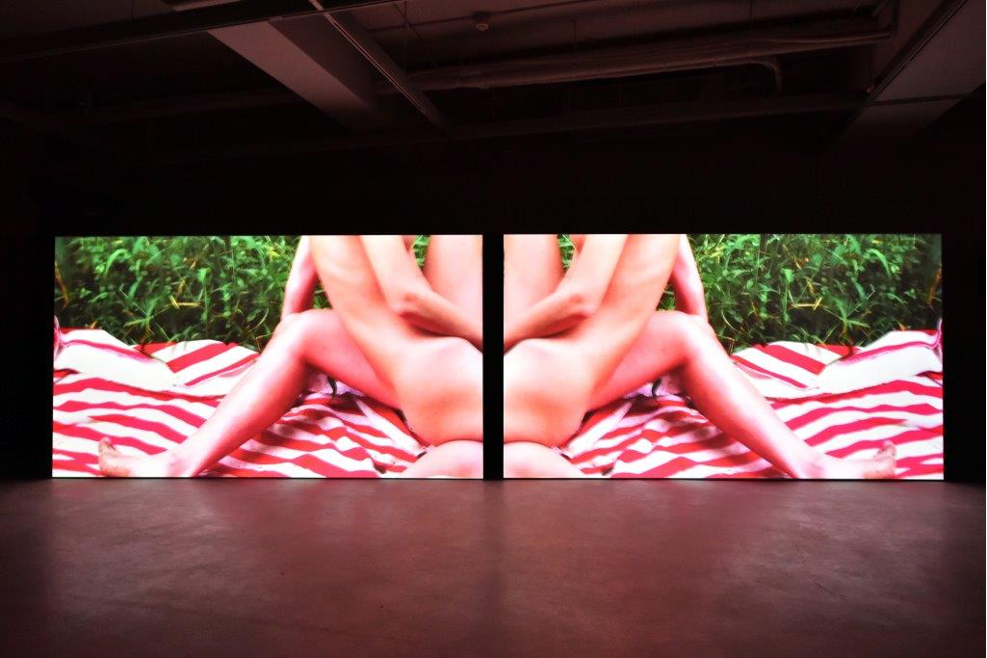
SU Hui-Yu. Super Taboo (2016). Image courtesy of Double Square Gallery.
The frontality of art means that art does not shy away from but instead turning the front towards these critical points to take initiatives actively. As for how art wins public recognition, it is simply a matter of adopting different rhetoric strategies of the artistic language. For example, whereas the contents might be sharp, marginal, and do not conform to the mainstream audiovisual preferences, the artistic approaches can be gentle, indirect, or mitigated by adjusting or appropriating cultural signs of popular aesthetics. Anything can be rhetoric, including artistic approaches. Therefore, this should not be a criteria of determining the value. If the positivity/frontality of art can really be brought out, its objective would be to help people “comprehend” the core and the fundamental of things concealed beneath the veil of this network of social systems. Art should be direct and thorough (like the Chinese title of Ava Hsueh’s abovementioned solo exhibition, which means “to front it out”). Because of its radicalness, such art will surely become classic in the future; and what it deals with will never be confined to the latter.
Additionally, “Art &-“ is a forum section created by Dr. Yulin Lee, the former artistic director of the Taishin Bank Foundation for Arts and Culture, for the website of ARTalks affiliated to the Taishin Arts Award. The forum centers on facilitating integral dialogues between art and society in relation to culture. Observation committee members as well as the communities of humanities and arts have been invited to share their insights and opinions, which aim to generate discussions and spark new ideas. Consequently, in addition to the Taishin Arts Award, which has indeed received much recognition from different social circles, we look forward to seeing “Art &-“ creating more contributions to Taiwan’s contemporary art discourses.
Art & Award
Yulin Lee, Artistic Director (2009-2016)
Art & Award
Why Do We Need an Arts Award?
Yulin Lee, Artistic Director of the Taishin Bank Foundation for Arts and Culture (2009-2016)
The Taishin Bank Foundation for Arts and Culture was established in the year 2001.
Among the many corporate-funded arts and culture foundations inTaiwan, Taishin maintains the unique objective of supporting contemporary art works of innovation. After one year of consultation with experts and internal deliberation, the Foundation proposed as its core agenda an arts award that focuses on both visual and performing arts. Extensively speaking, the Taishin Arts Award has become the central imagery that facilitates the development of the Foundation as an institution. As modern creative trends take a turn, the Award must also evolve accordingly. In other words, when an institution makes it a core agenda to support contemporary arts with awards, the institution must inevitably possess the determination and competence for regular self-renewal.
Thus, in 2011, as the Taishin Arts Award was about to reach its ten-year milestone, we began inspecting its implementation in the past decade on a comprehensive scale, while considering the possibility and necessity of its reform. In retrospection of the Award’s history, the major issue we faced was the re-presentation of the audiovisual and written materials accumulated over the years, spanning the fields of performing and visual arts; how might these materials be provided to a larger public; and moreover, how might we reveal the connection to and meaning of the materials in a contemporary context? In response to this issue, we completed the Taishin Arts Award Archive (A.A.A.) in 2012, a unique online platform that comprises an audiovisual database for 154 nominated or award-winning works, all open to public access. This digital archive is also a new form of a virtual, online exhibition, no longer in the traditional form of “retrospective exhibitions” centered on the artworks only. The 154 works were tagged with diverse keywords, incorporated with more than the elitist language commonly employed in art critiques, but also tagged with words from everyday life. Through the logic of the open search system on the internet, the independent works of art are able to be situated in a brand new context and thus develop imaginative relationships with other artworks, which would otherwise have been implausible with the current artistic rhetoric.
In looking into the future, we launched the reforming of the Taishin Arts Award in 2013. The new scheme of the Award accommodates the following major objectives: 1. to facilitate the formation of a cross-disciplinary viewing, discussion, and selection mechanism; 2. to combine the observation and nomination systems, promote year-round independent nomination and review, and publish real-time commentary online to facilitate social networking and discourse; 3. to shift the selection criteria from expression of excellent creativity to the social sphere of art and its power of communication and inversion of the reality. It might also be said that, instead of pursuing the completeness and innovation of formal aesthetics, the Award now responds to the efforts of artists in attempting to define what else art can be. In as early as the 1960s, Western contemporary arts began harboring the thought of escaping from Modernism ideas likening art to aesthetic products, and inclining toward social actions and implementations that emphasize “cultural production.”
The renowned conceptual artist, such as Joseph Beuys, proposed the concept of “social sculpture” to replace aesthetic, stationary sculptures with activities that shape the society. Today, artists express social concern and interference in such diverse ways, we are often asking ourselves “Where is art?” and “What is the impact?”[1] As WU Mali, one of the winners of the Eleventh Taishin Arts Award once said, “Art has become a word of action; it is an expression of a power, creativity and thought that activates the society.”[2]
“Why Do We Need an Arts Award?” This question is the title of a seminar held in 2013 when international jurors of the Taishin Arts Award visited Taiwan. What underlies this question is clearly an expression of Taishin’s reflection on self value and ambition in self progress, as both an award and a foundation or institution. One of the discussants Dr. Ute Meta Bauer[3] introduced the Visible Award/Visible Project newly founded in 2011, as well as the long-established UK contemporary arts award, the Turner Prize. Common in their objectives to support contemporary art, definitions of different institutions have led to entirely different selection criteria. The Turner Prize is awarded to artists under the age of 50, and focuses on the innovation in artistic style. The Visible Award emphasizes the social and cultural aspects of art, and tends to support ongoing artistic/pro-active social projects with a monetary award of €25,000. Also, the Visible Award has designed a diversified, productive platform for academic research; by inviting winners to participate in dialogues or forums, the Award increases the publicity of winners and their artistic projects, making them more “visible” and therefore more efficient in their social contributions. It is an important mission of the Visible Award to seek art that “leaves its own field and becomes visible as part of something else.”[4]
As the new Taishin Arts Award Exhibition commences, perhaps many will be curious as to how the new scheme differs from the old. What is the connection between the Award’s future development and Taiwan’s creative environment of contemporary arts? One may grasp a glance from the five short-listed winners of the Twelfth Award: Dear All by theater director LI Ming-Chen; My Dear, collaborative work of choreographer HO Hsiao-Mei and paper-cutting artist Jam WU; Dear John, created from concepts proposed by musician LIN Kuei-Ju and with co-efforts of choreographer TUNG I-Fen, sound and sound installation artist WANG Chung-Kun; as well as two visual arts creations of more “independent” outputs: the Ruin Image Crystal Project: 10 Scenes by KAO Jun-Honn and Hua-Shan-Qiang by SU Yu-Hsien.
These five works comprise a diversity of forms, including the traditional categories of dance, theater, music and visual art works. Every work, in its own imaginative way, exudes outside the frameworks of conventional artistic categories, and through them it is evident how every artist attempts in ceaseless pursuit and exploration of artistic expression and potential; we can see their concern for political, historical, current social and cultural issues, as well as their involvement in taking action. In other words, they have all achieved the realm where art “becomes visible as part of something else.”
Like the five winners, several nominated works throughout last year (2013) (including the ten finalists), have responded forthrightly through the form of art to the pressing public issues challenging current Taiwanese society. For example, The Land Project – Adherents of the Golden Bricks by choreographer XIAO Zi-Han expresses concern for residents of the Huaguang community demolished by force; CHEN Po-I’s Morakot – Solo Exhibition incorporates photography and field work in hydraulic engineering; groups of artists attended the Citizens Nonuke’s anti-nuclear “Nonuke Man” flash mob; the graffiti artist Candy Bird entered the demolished site of the Shihlin District WANG family premises, and used guerrilla-like graffiti to reveal the bureaucratic negligence, profiting of consortia and failure of land justice; all of which were included in the list of 2013 nomination and finalists.[5]
Furthermore, noting the extensive impact of the so-called Sunflower Student Movement in March this year, the first quarter nominees for the 13th Taishin Arts Award (2014) also comprise a number of activities surrounding this largest-scale social movement in Taiwanese history. The student occupation of the legislature during the Movement, as well as the Bowel Blossom and Intestine Flower Forums attempting to crumble the center of power and provide emotional release through profanity-laden speeches were among the nomination list.[6] Praise and denunciation in direct opposition of one another quickly filled the ARTalks online platform established for the Taishin Arts Award reform. Continually in debate are the binary questions “Is this art?” and the open discussion as to “Can this become art at all?” There is, I suppose, no absolute answer, but in the brilliant process of diverse reflection and critical thinking, the significance of the Award’s new system has become evident.
“Why do we need an arts award?” is at once loaded with connotations of self admonition as well as self ridicule. Its answer lies in the overall plans and macroscopic aspirations of the Award. A possible way of responding to this question is to consider what an arts award can contribute to in addition to monetary support. I believe there are still many ways of contemplation and exploration, including at least two aspects. First, the relationship between the institution and artist: how to respond to the anticipation of award-winning artist and to his/her future plans of continual creative projects. Secondly, the connection between the institution and general public: how to enhance inventive public outreach and public education in order to increase the visibility of both the winning artists and the arts award itself. During much of this process, I believe transparent discussion and open-mindedness is the necessary cornerstone for maintaining the value of the Taishin Arts Award. Through diverse channels of communication, we hope to inspire public interest in and concern for contemporary arts, while via a research-based, discursive and productive platform such as ARTalks, we may more powerfully enhance the “visibility” of contemporary art works inTaiwan, and contribute to the social artistic power they aspire to realize.
At the turning point of the new Taishin Arts Award, I humbly wish that art may eventually become a formidable force to enable social change and communication.
[1] Quoted from a private interview with HSIAO Li-Hung.
[2] Quoted from a non-public interview.
[3] Dr. Ute Meta Bauer is an expert in a diversity of fields; she has founded and served as Director of the Program in Art, Culture, and Technology at the Massachusetts Institute of Technology (MIT, 2009-2012); curated exhibitions and projects on contemporary art, film, video, and sound, specializing particularly in transdisciplinary projects; served as curator of the Berlin exhibition “The Future Archive” (2012), as Artistic Director for the 2004 Berlin Biennale, and as curator for the 2001-2002 “Documenta11” in Kassel, Germany. During 2002-2005, she served as founding director of the foundation Office for Contemporary Art Norway (OCA) based in Oslo. Her recent publications include Intellectual Birdhouse: Artistic Practice as Research and Ute Meta Bauer: Interviews 1992–2010.
[4] Quote from the website of the Visible Award/ Visible Project: http://www.visibleproject.org/blog/award/ .
[5] See Twelfth Award First Quarter list of nominated works and observation reports on ARTalks Website..
[6] See articles by Thirteenth Award nominators, CHANG Hsiao-Hung and KUO Liang-Ting on ARTalks Website.
Towards the New Direction, New Idea, New Chapter and New Hope of Taiwanese Art
SHIH Jui-Jen, Artistic Director (2001-2009)
Towards the New Direction, New Idea, New Chapter and New Hope of Taiwanese Art
SHIH Jui-Jen, Artistic Director of the Taishin Bank Foundation for Arts and Culture (2001-2019)
The Taishin Arts Award, which is sponsored by the Taishin Group and hosted by the Taishin Bank Foundation for Arts and Culture, embodies the corporate’s intention of giving back to society amidst the slowing environment to offer assistance to the art and cultural circles in the form of corporate sponsorship. Focusing on Taiwan and organized annually, the Taishin Arts Award has a nomination group formed by arts and cultural reporters, who have frequented exhibitions and performances, and invites art critics, who have followed events and activities in the art scene closely and continuously to form an observation committee for writing reviews, theorizing phenomena, and conducting the preliminary selection of the award. With the participation of multiple parties, year-round field observation, and extensive evaluation to select the best art exhibition and performance of the year, to whom the award not only presents a spiritual laureate but also a substantial monetary prize as encouragement and support. Throughout the entire selection process, the role and function of the nomination committee members is to discover the new “highlights” of art and actively recommend excellent exhibitions and performances to the award organizer. The mission of the observation committee, in addition to searching for new artistic highlights, is to further carry out spectral analyses of light spots formed by individual artists as well as the collective spectrum of Taiwanese art.
The purpose of the Taishin Arts Award is to first encourage the best annual art exhibition and performance. However, more importantly, the award is established to comprehensively promote art, guide the society in learning about art, and enhance the public’s appreciation of art. In order to achieve the goal, we firmly believe that it is necessary to incorporate the power of the media to create a regular art forum so that art could be more widely promoted, and artistic creation could be more professionalized through ceaseless writing about art.
Driven by this belief, we co-launched the column of “Weekly Art Review” with China Times: focusing on ongoing exhibitions and performances, members of the observation committee take turns to write their reviews and evaluations after viewing specific works. The art review column, as a matter of fact, constitutes a spectral analysis of individual light spots, and serves as a real-time writing relay to engage the society and the public. On the other hand, we co-organize the “Observation Forum” with Artco Monthly, in which members of the visual arts observation group discuss various issues as an entry point to deal with a larger scope of concern, produce more theoretical discourses, and provide deeper analyses and comparisons to write about the developmental phenomena and spiritual status quo of Taiwanese art with multi-perspectival interpretations and meditative writings. In the subsequent several years, more collaborators have also joined us so that the art criticism could be extended to more and diverse fields to foster the participation of more readers.
The reason why the operation of the Taishin Arts Award has been such a massive undertaking and has combined so many observers’ effort in writing and the promotion by media is because we hope that the process of selecting the award winners, together with the refinement and production of meaning, could transform outstanding art exhibitions and performances into a new audiovisual focal point in Taiwanese society, and allow us to gradually perceive the new direction, new idea, new chapter and new hope of Taiwanese art through the continuously expanding discourses of art.
